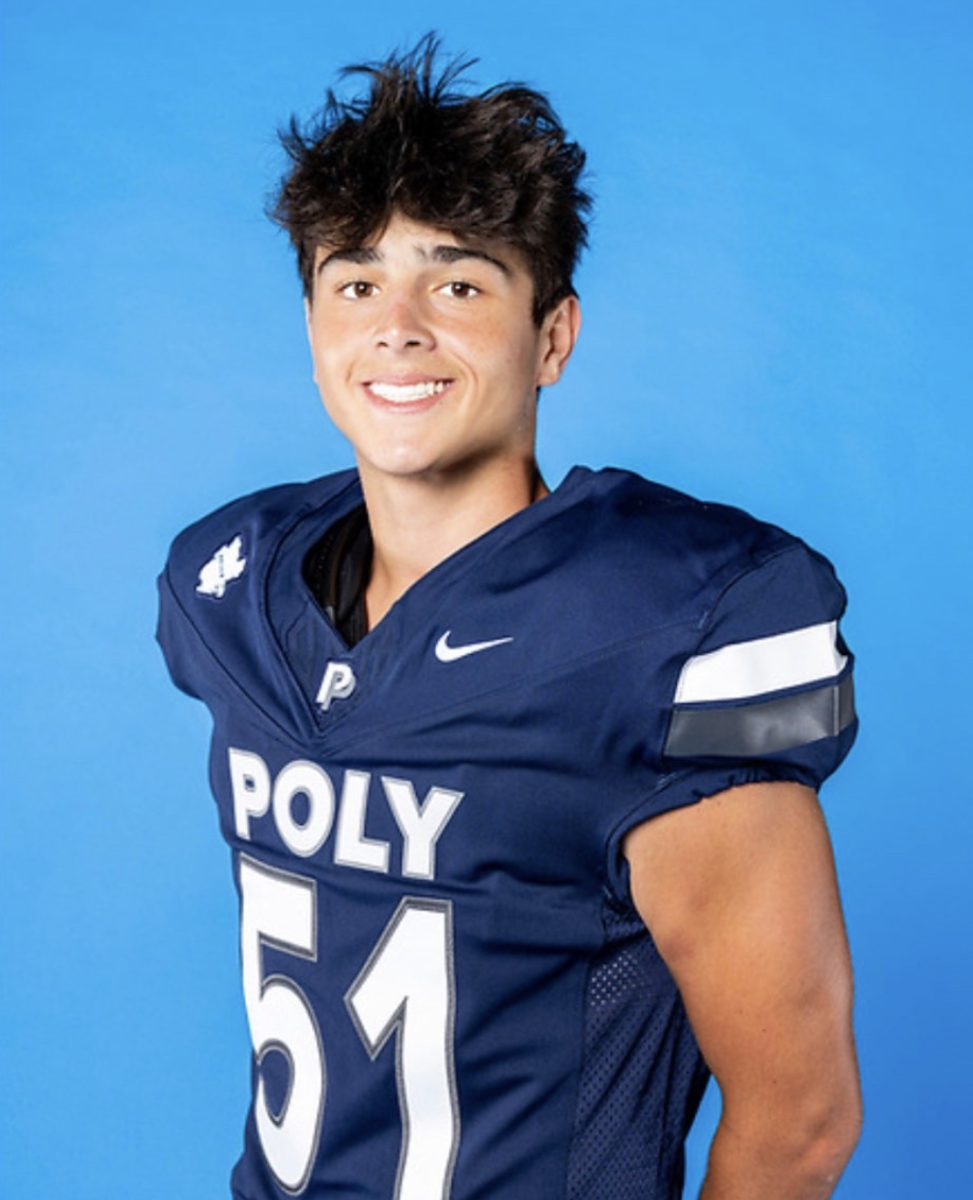Senior Spotlight: Leo Wang
April 4, 2023
Poly Senior Leo Wang will be attending Williams College in the fall of 2023. He is an active participant in the Poly Arts community, and submitted several works to college, and has won many competitions. Before coming to Poly as a sophomore, he grew up in Hangzhou, China.
“I got into art at an early age. I used to dance, and was one of two boys in dancing class and that boy left, and that gender pressure crushed me,” Wang said. “I switched to visual art that I have been doing since then.”
After Wang began to pursue art, he never stopped. He explained what this was like growing up in Hangzhou, “I did art through elementary school and then middle school. I went to school in China, in a city called Hangzhou. It was a good school.” Wang was studying as an international student. He said, “it is a general school and I was in international classes that prepare you to go abroad.”
While his school was high-quality academically, he said he “took art classes outside of school because art education in China sucks.” He said, “they do offer art classes in school, but they are at an inferior level compared to the primary subjects like English, Chinese, math, or science. So, I mostly got my art education outside of school.”
In the United States, he continued to study art outside of school. He said, “I won two gold keys for the Scholastic Art awards outside of school last year for my pieces.” However, unlike in China, he began to do art in school in any form that he could. He explains that he helped create the Visual Art Contest. He said, “it was Tasha Fonstein’s idea (class of ’22) … we felt that Poly visual art needs some representation.”
In addition to co-founding this competition, he is an organizer of Poly’s Coffeehouse along with Shaza Mousa, another Poly Senior. He said, “Shaza and I are the organizers and we sing, dance, and perform.” While the two work well together, they have different areas of expertise within the arts. Wang said, “She is a poet and I do visual art. It is really weird for us to lead a whole performance space, but we have been trying to include different artistic voices in the Coffeehouse.” While Wang and Mousa are different as artists, they collaborate well together in leading the event that many people perform in and enjoy three times each year.
The Coffeehouse has done a stellar job at drawing the Poly community to appreciate the arts, but Wang has another goal: to diversify the forms of art. He said, “we have done many visual art exhibitions before in Coffeehouse where people get an intermission and people get to look at the art. Shaza has been doing writings a lot so we really try to help Poly’s art community become more diverse in that way.”
Wang has taken advantage of almost every art class at Poly. He said he has taken, “all of the visual art classes and some theater classes. Like art history, studio art, painting, drawing, and more.” These classes helped him with his work he submitted to college. Wang shares that his portfolio was, “visual-based, I did a studio art portfolio which mainly came from my AP art classes in which we would have to do 15-20 pieces.” In addition to studio art, he said he “also did a portfolio for theater design, which is something I am interested in for the future.”
His forms of art vary, but Wang tells us there was a consistent theme. He said, “throughout my high school years I have tried to explore why art matters, and I have come to the conclusion that art has to be political….so, a lot of my artwork is based in political activisim and specifically talking about my experience growing up in a communist regime. And then, how that political system has affected me personally.” This political climate had a lasting effect on Wang. He said that he “grew up in Western China, where there are a lot of different ethnic groups, and different religions. I have witnessed terrorist events there with my parents. I also saw a lot of racial conflicts within China, between religious and political differences which got me thinking about human rights in China.” These race-related and religious terrorist events struck him and compelled him to “try to use [his] work as a way to use my voice and to amplify those ideas.”
Wang’s favorite piece of artwork titled Triads played on these ideas that struck him so intensely. The piece displays several heads that look like monsters, mountains, and some iconography. Wang said,“[my artwork] is about witnessing terrorist events. It is very political, based on communist leader iconography.” Iconography is the use of images or symbols in art and the interpretation of it, or a collection of illustrations or portraits. Wang said that “there is a lot of hidden symbolism going on in that whole piece. The reason that it is my favorite painting is that I was thinking about bringing that painting back home when I go back to China this summer, and I thought,‘What if somebody found out?’ ‘What if somebody sees it, and I get into trouble?’” The possible consequences of his work made Wang understand why it matters. He said, “that made me realize that it carried some power. It will negatively affect me, but it is powerful because it has a message.”
































